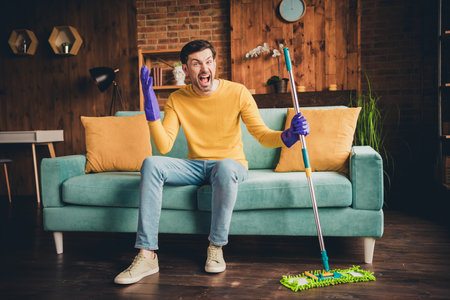Understanding Your Small Pet’s Ears
When it comes to keeping your small pet healthy and happy, ear care is often overlooked but absolutely essential. Small pets—like rabbits, guinea pigs, hamsters, ferrets, and even some species of mice and rats—are popular companions in many American households. Each of these animals has unique ear anatomy that requires special attention. For example, rabbits have long, upright or floppy ears that are prone to wax buildup and debris, while guinea pigs have smaller, more closed ear canals that can easily trap moisture. Understanding the structure of your pet’s ears helps you recognize what’s normal and what isn’t. Maintaining good ear health is crucial because neglected ears can lead to discomfort, infections, hearing loss, or even more serious health problems. By learning about your pet’s specific needs and keeping a close eye on their ears, you’re helping them live a more comfortable and joyful life.
2. Spotting Signs of Ear Issues
Keeping an eye out for early signs of ear problems in your small pet is key to maintaining their health and comfort. Many issues can be resolved quickly if caught early, but left untreated, they can lead to discomfort or more serious conditions. Below, you’ll find a helpful table summarizing the most common symptoms of ear issues in small pets and what they might mean.
| Symptom | What It Might Indicate | When to Be Concerned |
|---|---|---|
| Unusual Scratching or Pawing at Ears | Irritation, itchiness, possible mites or allergies | If persistent, or if skin becomes red or raw |
| Frequent Head Shaking or Tilting | Discomfort from infection, foreign objects, or buildup | If ongoing for more than a day or accompanied by loss of balance |
| Odor from Ears | Bacterial or yeast infection | If the smell is strong, foul, or unusual for your pet |
| Visible Discharge (Yellow, Brown, or Bloody) | Infection, mites, injury, or wax buildup | If discharge is thick, colored, or bloody; seek veterinary care promptly |
| Redness, Swelling, or Pain Around Ears | Inflammation due to infection, bite, or allergy | If swelling increases rapidly or causes distress to your pet |
| Hearing Loss or Unresponsiveness to Sounds | Severe blockage or advanced infection | If sudden changes in behavior are noticed; vet visit recommended ASAP |
Why Quick Action Matters
Small pets like rabbits, guinea pigs, hamsters, and ferrets are especially sensitive to ear issues. Because their ear canals are delicate and infections can progress rapidly, it’s important not to ignore these warning signs. If you notice any combination of these symptoms—especially discharge with odor, swelling, or changes in behavior—it’s best to consult your veterinarian as soon as possible.

3. Safe At-Home Ear Cleaning Tips
Cleaning your small pet’s ears at home can be a simple and stress-free process when done correctly. Here’s a step-by-step guide to help you keep your furry friend comfortable and their ears healthy.
Step 1: Gather the Right Supplies
Before you begin, make sure you have everything you need on hand. Use a veterinarian-recommended ear cleaning solution that’s specifically formulated for pets—never use hydrogen peroxide, alcohol, or products designed for humans. You’ll also need soft cotton balls or gauze pads, and treats to reward your pet for good behavior.
Step 2: Create a Calm Environment
Pick a quiet space where your pet feels safe. Gently hold your pet in your lap or on a non-slip surface. If your pet is especially wiggly, ask someone to help you by holding them securely, but avoid causing stress or restraint that could frighten them.
Step 3: Inspect the Ears
Take a moment to look inside your pet’s ears. Healthy ears should be pink and odor-free, with minimal wax buildup. If you notice redness, swelling, discharge, or a strong smell, pause the cleaning and consult your veterinarian before proceeding.
Step 4: Apply the Ear Cleaner
Gently lift your pet’s ear flap and carefully squeeze a few drops of the ear cleaning solution into the ear canal (follow the product instructions for the right amount). Avoid letting the tip of the bottle touch the ear to prevent contamination.
Step 5: Massage and Wipe Away Debris
After applying the solution, softly massage the base of your pet’s ear for about 20–30 seconds. This helps loosen debris and wax inside. Allow your pet to shake their head—this is normal and helps bring gunk to the surface. Then, gently wipe away any visible debris from the outer ear with a cotton ball or gauze pad. Never insert anything deep into the ear canal, as this can cause injury.
Step 6: Offer Praise and Treats
After finishing both ears (if needed), give your pet plenty of praise and a favorite treat. Positive reinforcement makes future ear cleanings much easier for both of you!
Important Note:
If your small pet seems uncomfortable during cleaning or if you notice persistent symptoms like redness, discharge, or odor, stop and consult your vet. Regular at-home cleanings are great for prevention, but some issues require professional care.
4. What to Avoid During Ear Care
When caring for your small pet’s ears, it’s just as important to know what not to do as it is to follow proper cleaning steps. Many well-intentioned pet owners make mistakes that can lead to discomfort, ear infections, or even long-term damage. Here are some of the most common pitfalls to avoid:
Inappropriate Cleaning Tools
Using the wrong tools can injure your pet’s sensitive ears. Cotton swabs, toothpicks, and sharp objects should never be inserted into the ear canal. These items can push debris deeper or cause scratches and trauma. Instead, use products specifically designed for small pets, such as soft gauze pads or pet-safe ear wipes.
Comparison of Safe vs. Unsafe Ear Cleaning Tools
| Safe Tools | Unsafe Tools |
|---|---|
| Pet ear wipes | Cotton swabs (Q-tips) |
| Soft gauze pads | Toothpicks |
| Vet-approved ear solutions | Pins or sharp objects |
Over-cleaning the Ears
While keeping your pet’s ears clean is important, cleaning them too often can strip away natural oils and disrupt the ear’s delicate environment. This may increase the risk of irritation or infection. Most small pets only need their ears checked and cleaned every couple of weeks unless your vet recommends a different schedule.
The Risks of Human Products and Home Remedies
Avoid using human ear cleaners, hydrogen peroxide, alcohol, vinegar, or essential oils in your pet’s ears. These substances can be harsh and cause pain or allergic reactions. Even well-meaning home remedies may be unsafe for animals and could worsen ear problems.
Summary: Key Mistakes to Avoid in Small Pet Ear Care
- Never insert cotton swabs or sharp objects into the ear canal.
- Avoid over-cleaning; stick to a vet-recommended schedule.
- Do not use human products or unapproved home remedies.
- If you notice redness, swelling, discharge, or foul odor, consult your veterinarian instead of trying to treat at home.
By steering clear of these common mistakes, you’ll help keep your small pet’s ears healthy and comfortable for years to come.
5. When to See a Vet
Even with the best at-home care, there are times when your small pet’s ears need professional attention. Knowing when to call your vet is essential for their health and comfort. If you notice any of the following signs—persistent scratching, head shaking, redness, swelling, foul odor, discharge, or if your pet seems to be in pain—it’s time to schedule a veterinary appointment. These symptoms may point to infections, mites, allergies, or other underlying conditions that require expert diagnosis and treatment.
Regular check-ups are also a key part of long-term ear health for small pets like rabbits, guinea pigs, hamsters, and ferrets. During these visits, your veterinarian can perform thorough ear exams, offer advice on proper cleaning techniques, and catch early signs of trouble before they become serious issues. Remember, some ear problems aren’t visible to the naked eye or may not show obvious symptoms right away. Preventive veterinary care ensures that your furry friend’s ears stay clean, comfortable, and healthy for years to come.
6. Preventing Future Ear Problems
Tips for Daily Care
Keeping your small pet’s ears healthy starts with consistent, gentle daily care. Make it a habit to observe your pet’s behavior and check their ears for any signs of redness, discharge, or scratching. Use a soft, damp cloth or a cotton pad to gently wipe around the outer ear—never insert anything into the ear canal. Regular handling helps your pet stay comfortable with ear checks and makes early detection of problems much easier.
Proper Habitat Maintenance
A clean living environment is essential for preventing ear infections in small pets like rabbits, guinea pigs, hamsters, and ferrets. Change bedding frequently and keep cages dry to avoid mold and bacteria buildup. Make sure food and water bowls are cleaned daily. Good ventilation reduces moisture, which can contribute to bacterial growth. Avoid placing cages in drafty areas or direct sunlight to keep temperature and humidity levels stable.
Nutrition for Healthy Ears
Balanced nutrition supports your pet’s immune system and skin health, which includes the delicate skin inside the ears. Feed species-appropriate diets rich in vitamins A and E, as these nutrients promote healthy skin and tissue repair. Offer fresh vegetables and high-quality pellets as recommended by your veterinarian. Always provide clean, fresh water to help prevent dehydration that can affect skin integrity.
Bonus Tip: Know When to Call Your Vet
If you notice persistent scratching, odor, swelling, or discharge from your small pet’s ears despite regular care, contact your veterinarian promptly. Early intervention is key to preventing more serious ear conditions. By combining daily monitoring, proper habitat upkeep, and good nutrition, you’ll help ensure your little companion’s ears stay healthy all year long.


